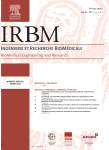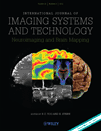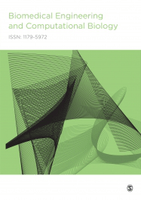
Biomedical Engineering Letters
Scope & Guideline
Advancing biomedical innovation through shared knowledge.
Introduction
Aims and Scopes
- Medical Imaging Technologies:
The journal extensively covers advancements in medical imaging techniques, including image reconstruction, segmentation, and analysis methods, particularly those utilizing deep learning and artificial intelligence. - Wearable and Implantable Devices:
Research on the design and application of wearable and implantable medical devices is a key focus, with studies exploring their integration, functionality, and patient monitoring capabilities. - Biomedical Signal Processing:
The journal publishes work on processing physiological signals, such as ECG, EEG, and PPG, utilizing modern computational methods to improve diagnostic accuracy and patient care. - Nanotechnology in Medicine:
Innovative applications of nanotechnology in drug delivery, biosensors, and tissue engineering are prominent, highlighting the potential of nanoscale materials in enhancing therapeutic outcomes. - Robotic Systems in Surgery:
The journal features research on robotic-assisted surgical techniques, emphasizing the development and optimization of robotic systems for minimally invasive procedures. - Machine Learning and AI Applications:
There is a strong emphasis on the application of machine learning and artificial intelligence in various biomedical fields, from predictive modeling to automated diagnostics.
Trending and Emerging
- Deep Learning in Medical Imaging:
The application of deep learning techniques for medical image reconstruction, segmentation, and analysis is rapidly increasing, showcasing the potential of AI to enhance diagnostic accuracy. - Robotics and Automation in Surgery:
There is a growing trend in the development of robotic systems for surgical applications, with a focus on improving precision and outcomes in minimally invasive procedures. - Telehealth and Remote Monitoring:
The rise of telehealth solutions and remote monitoring technologies is a significant emerging theme, driven by the need for accessible healthcare solutions, particularly in light of recent global health challenges. - Nanomedicine and Targeted Therapies:
Research into nanomedicine and targeted drug delivery systems is gaining momentum, highlighting innovative approaches to enhance treatment efficacy and reduce side effects. - Wearable Health Technologies:
The development of advanced wearable technologies for continuous health monitoring and data collection is trending, reflecting a shift towards proactive health management. - Bioinformatics and Computational Biology:
There is an increasing focus on bioinformatics and computational methods to analyze complex biological data, facilitating breakthroughs in personalized medicine and genomics.
Declining or Waning
- Traditional Biomedical Devices:
Research on conventional biomedical devices, such as basic prosthetics and traditional diagnostic tools, is becoming less prevalent as the field shifts towards more advanced, integrated solutions. - Basic Surgical Techniques:
Studies focusing solely on traditional surgical techniques without the integration of robotics or advanced imaging technologies are seeing reduced publication frequency. - Conventional Drug Delivery Systems:
There is a noticeable decline in the exploration of conventional drug delivery systems, with a shift towards innovative, nanotechnology-based approaches. - Static Data Analysis:
The focus on static data analysis methods, without the integration of real-time or adaptive learning techniques, appears to be waning as dynamic methodologies gain traction. - Basic Rehabilitation Techniques:
Research on traditional rehabilitation methods is less common, overshadowed by studies incorporating advanced technologies like robotics and AI-driven rehabilitation frameworks.
Similar Journals

Progress in Biomedical Engineering
To elevate biomedical solutions for a healthier tomorrow.Progress in Biomedical Engineering, published by IOP Publishing Ltd, is a premier open-access journal that serves as a vital platform for the dissemination of innovative research in the field of biomedical engineering. With an impressive Q1 classification in the Biomedical Engineering category for 2023, this journal has established itself as a significant contributor to the advancement of engineering solutions that improve healthcare outcomes. Recognized for its high-quality and impactful publications, it ranks 51st out of 303 in its field on Scopus, placing it in the 83rd percentile. The journal aims to foster interdisciplinary collaboration and introduce pioneering methodologies and technologies that bridge the gap between engineering and medicine. By providing a pathway for rapid communication of fundamental and applied research, Progress in Biomedical Engineering is dedicated to shaping the future of healthcare technology. Access to its content ensures that researchers, professionals, and students remain at the forefront of biomedical innovation.

BIOMEDICAL ENGINEERING-APPLICATIONS BASIS COMMUNICATIONS
Advancing biomedical innovation through rigorous research.BIOMEDICAL ENGINEERING-APPLICATIONS BASIS COMMUNICATIONS is a prominent journal dedicated to the dynamic field of biomedical engineering, published by WORLD SCIENTIFIC PUBL CO PTE LTD. Since its inception in 1992, the journal has provided a platform for the dissemination of high-quality research and innovative applications within the biomedical engineering domain. Despite its current Q4 ranking in multiple categories such as Bioengineering and Biomedical Engineering, the journal serves as an essential resource for researchers and professionals seeking to explore the latest developments and practical applications in this interdisciplinary field. The journal is based in Singapore, reflecting the region's growing influence in scientific research and technology. Although it does not offer open access, it continues to attract submissions that enrich the scientific dialogue within its community. With a commitment to fostering knowledge and research collaboration, this journal remains a vital contributor to the ongoing advancements in biomedical technology and engineering.

BIOMEDICAL MICRODEVICES
Fostering Collaboration in Biomedical Microdevice ResearchBIOMEDICAL MICRODEVICES is a leading journal published by Springer that focuses on the innovative field of microdevices within biomedical engineering. With an ISSN of 1387-2176 and an E-ISSN of 1572-8781, BIOMEDICAL MICRODEVICES offers a prestigious platform for researchers to disseminate their findings from 1998 to 2024, demonstrating a long-standing commitment to advancing knowledge in this critical area. The journal is recognized for its significant contributions, boasting a Q2 ranking in Biomedical Engineering and Nanoscience and Nanotechnology, and a Q3 rank in Molecular Biology. Renowned for its rigorous peer-review process, it is positioned within the top 30% of its field according to Scopus rankings, making it a valuable resource for researchers and practitioners alike. Though it operates under a subscription model, the emphasis on quality and relevance within its scope ensures that BIOMEDICAL MICRODEVICES remains a vital source of cutting-edge research that bridges engineering and biological systems, fostering innovation and collaboration in the pursuit of novel health solutions.

IRBM
Elevating the Dialogue in Biomedical Engineering and BiophysicsIRBM, published by Elsevier Science Inc, stands at the forefront of research in the domains of Biomedical Engineering and Biophysics, boasting impressively high rankings with a Q1 category in both fields according to the 2023 evaluations. With an effective focus on cutting-edge innovations and methodologies, IRBM provides a vital platform for researchers, professionals, and students alike seeking to disseminate and access groundbreaking findings and developments. Its strong presence in the Scopus database, with ranks of #12 in Biochemistry, Genetics and Molecular Biology and #42 in Biomedical Engineering, places it in the top percentile of impactful journals in the field, making it a crucial resource for advancing knowledge and fostering collaboration. While the journal maintains a traditional subscription model, it continues to attract a diverse readership eager for insightful studies and reviews that push the boundaries of science and engineering. With a projected convergence of years extending to 2024, IRBM promises to remain a significant contributor to the ongoing dialogue in the life sciences.

Nature Biomedical Engineering
Advancing the Frontiers of BioengineeringNature Biomedical Engineering is a premier journal published by NATURE PORTFOLIO, focusing on innovative research at the intersection of engineering and biomedical sciences. With an ISSN of 2157-846X, this journal aims to disseminate groundbreaking studies that advance the field of bioengineering, biotechnology, and medical applications. Since its inception in 2017, it has rapidly earned a reputation for excellence, consistently achieving a Q1 ranking in various categories including Bioengineering and Biomedical Engineering, and receiving acclaim in prestigious Scopus rankings, boasting top positions in the fields of Computer Science Applications and Medicine. The journal operates under a rigorous peer-review process, ensuring that all published articles contribute substantially to the existing body of knowledge. Furthermore, it facilitates a broad accessibility model for researchers and practitioners, bolstering collaboration and innovation within the global scientific community. Nature Biomedical Engineering is not just a publication; it serves as a vital platform for thought leadership in the transformative field of biomedical engineering.

Bio-Design and Manufacturing
Crafting the Future Through Bio-Design InnovationsBio-Design and Manufacturing, published by SPRINGER HEIDELBERG, is a pioneering journal that stands at the forefront of innovation in the fields of Biomedical Engineering, Biotechnology, Industrial and Manufacturing Engineering, and Materials Science. With its ISSN 2096-5524 and E-ISSN 2522-8552, this journal has established itself as a leading platform for disseminating cutting-edge research and advancements that merge biological principles with manufacturing processes, emphasizing sustainable and efficient practices. It has garnered recognition in the 2023 category quartiles, boasting a Q1 rank in all its relevant fields, which underscores its significance and impact—evident from its prime Scopus rankings that place it within the top percentiles of numerous engineering and materials science disciplines. Researchers, professionals, and students alike benefit from the wealth of knowledge presented in this journal, making it an essential resource for those seeking to enhance their understanding of bio-design applications and innovation in manufacturing processes.

Biomedical Engineering Online
Advancing biomedical innovation for a healthier tomorrow.Biomedical Engineering Online, published by BMC, is an esteemed open-access journal in the United Kingdom that has been advancing the field of biomedical engineering since its inception in 2002. With a commitment to disseminating high-quality research, the journal encompasses a broad scope, including innovative studies in biomaterials, imaging technologies, and medical applications. Recognized within the Q2 quartile for various categories such as Biomaterials and Biomedical Engineering, it ranks favorably among its peers: Rank #58 out of 333 in Radiology, and Rank #15 out of 63 in Radiological and Ultrasound Technology in the Scopus database. These rankings, coupled with an open-access model, ensure that critical advancements in medical technology are accessible to researchers, health professionals, and students globally. As it continues through its converged years from 2002 to 2024, Biomedical Engineering Online remains an invaluable resource for anyone involved in the cutting-edge intersection of engineering and medicine.

INTERNATIONAL JOURNAL OF IMAGING SYSTEMS AND TECHNOLOGY
Transforming Ideas into Imaging SolutionsINTERNATIONAL JOURNAL OF IMAGING SYSTEMS AND TECHNOLOGY, published by Wiley, is a leading journal dedicated to advancing the field of imaging systems and technologies. With an ISSN of 0899-9457 and E-ISSN 1098-1098, this esteemed journal offers a platform for high-quality research spanning essential interdisciplinary areas, including Biomedical Engineering, Computer Science, and Health Informatics. Recognized for its impactful contributions, it holds a commendable position in the Q2 quartile across multiple categories as of 2023. The journal boasts an excellent Scopus ranking, with notable acknowledgments like rank #49 out of 333 in Radiology, Nuclear Medicine, and Imaging, showcasing its relevance and importance in the academic community. Publishes annually from 1989 to 2024, it aims to bridge gaps in knowledge and foster innovative developments through rigorous peer-reviewed articles. Though it operates under a traditional access model, the journal maintains an accessible repository of cutting-edge research, making it indispensable for researchers, professionals, and students alike seeking to stay at the forefront of imaging technology advancements.

Annual Review of Biomedical Engineering
Transforming Ideas into Innovations in Biomedical EngineeringAnnual Review of Biomedical Engineering, published by Annual Reviews, stands as a leading academic journal dedicated to the rapidly evolving field of biomedical engineering. With an impressive impact factor that reflects its high citation rates and rigorous peer-review process, this journal offers critical insights by synthesizing cutting-edge advancements and applications in both biomedical engineering and miscellaneous medicine. The journal, which is available in both print (ISSN: 1523-9829) and electronic formats (E-ISSN: 1545-4274), serves as an essential resource for researchers, professionals, and students aiming to stay abreast of significant developments and emerging trends. As of 2023, it is recognized in the top tier (Q1) for both Biomedical Engineering and Medicine, showcasing its esteemed position within the academic community, reflected in its high Scopus rankings. Spanning from 1999 to 2024, the Annual Review of Biomedical Engineering continues to catalyze interdisciplinary collaboration and innovation at the intersection of engineering and healthcare.

Biomedical Engineering and Computational Biology
Pioneering Discoveries in Biomedical Engineering and Computational MethodsBiomedical Engineering and Computational Biology is a premier journal dedicated to advancing the fields of biomedical engineering and computational biology through rigorous research and innovation. Published by SAGE Publications Ltd, this Open Access journal has been providing a platform for the dissemination of high-quality research since 2009, enabling wider accessibility and collaboration among scientists and practitioners around the globe. With its comprehensive scope that encompasses the intersection of engineering principles and biological systems, the journal plays a critical role in fostering advancements in healthcare technologies and computational methods. Researchers, professionals, and students alike can take advantage of its rich repository of articles that contribute significantly to the understanding and application of complex biological data through computational techniques. The journal’s commitment to excellence is reflected in its high visibility within the scientific community, making it an essential resource for those looking to stay at the forefront of this dynamic field.